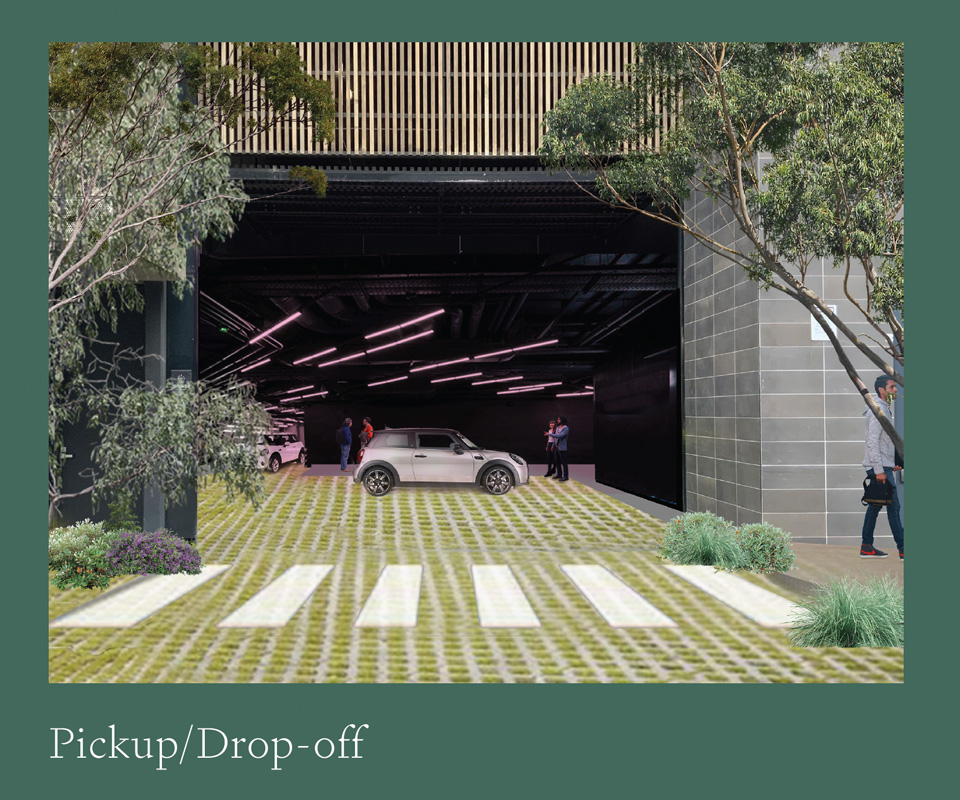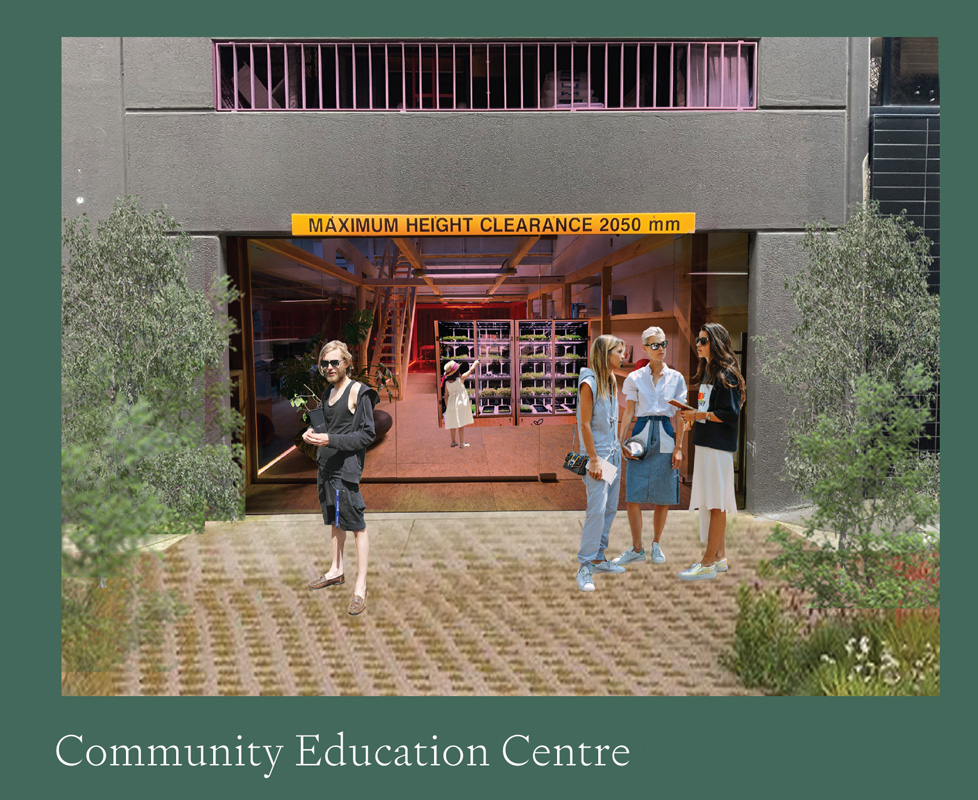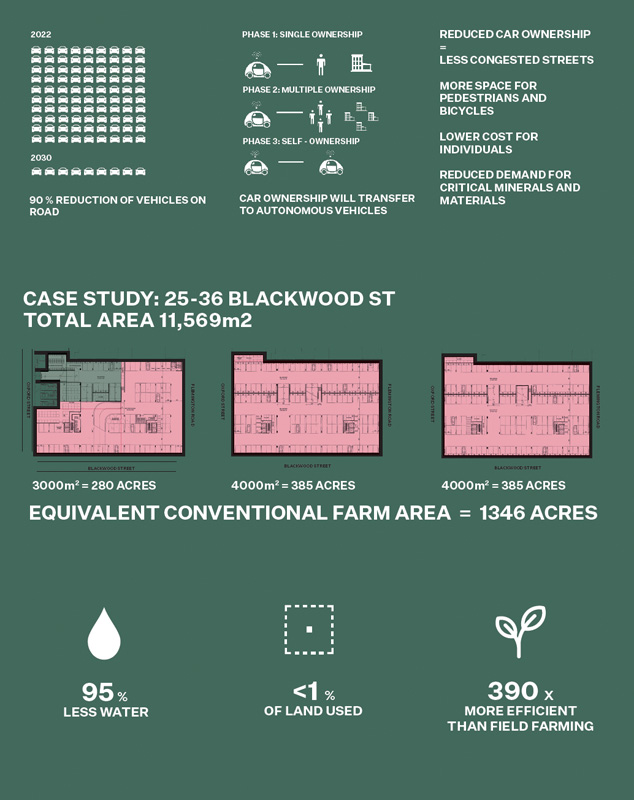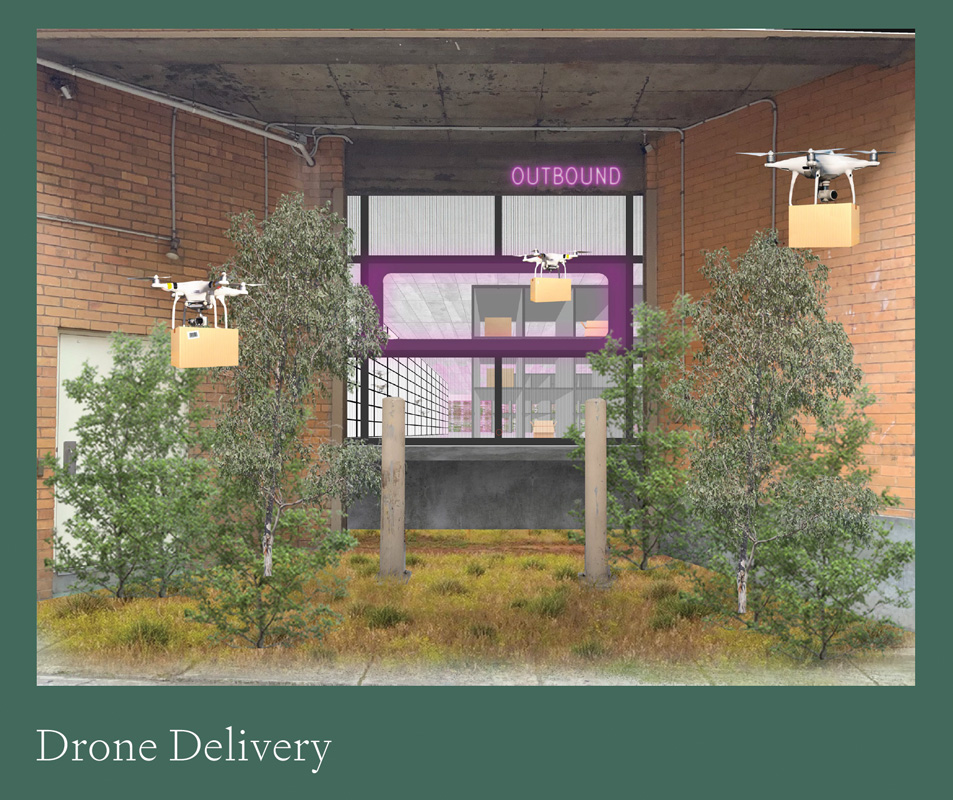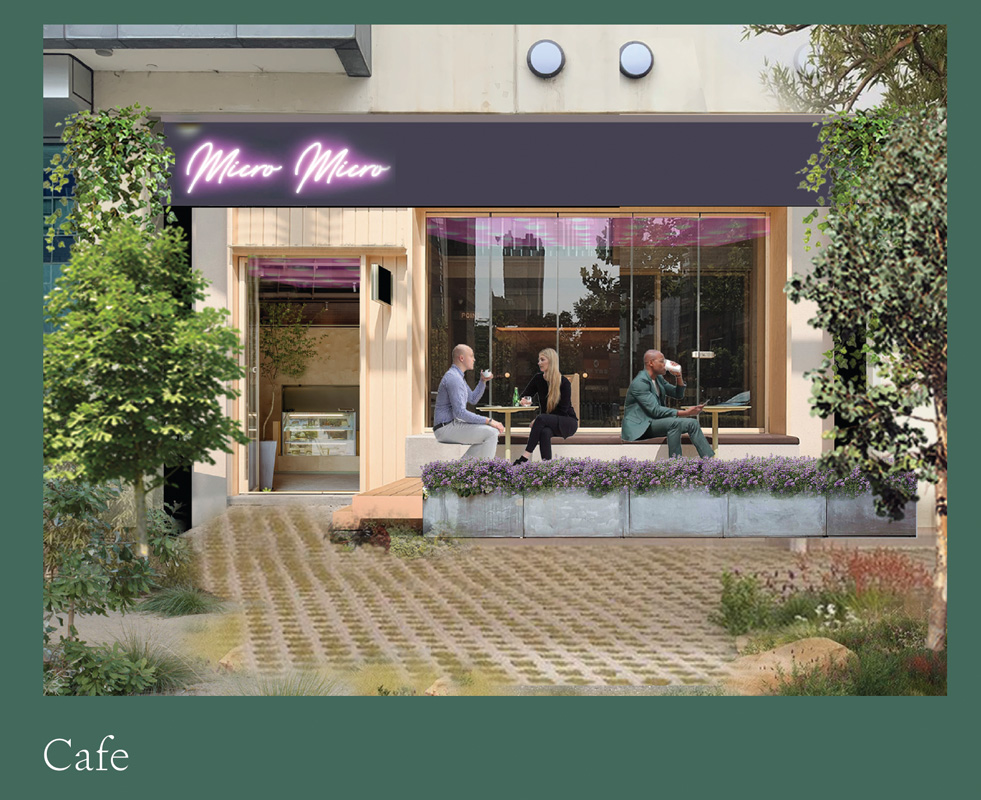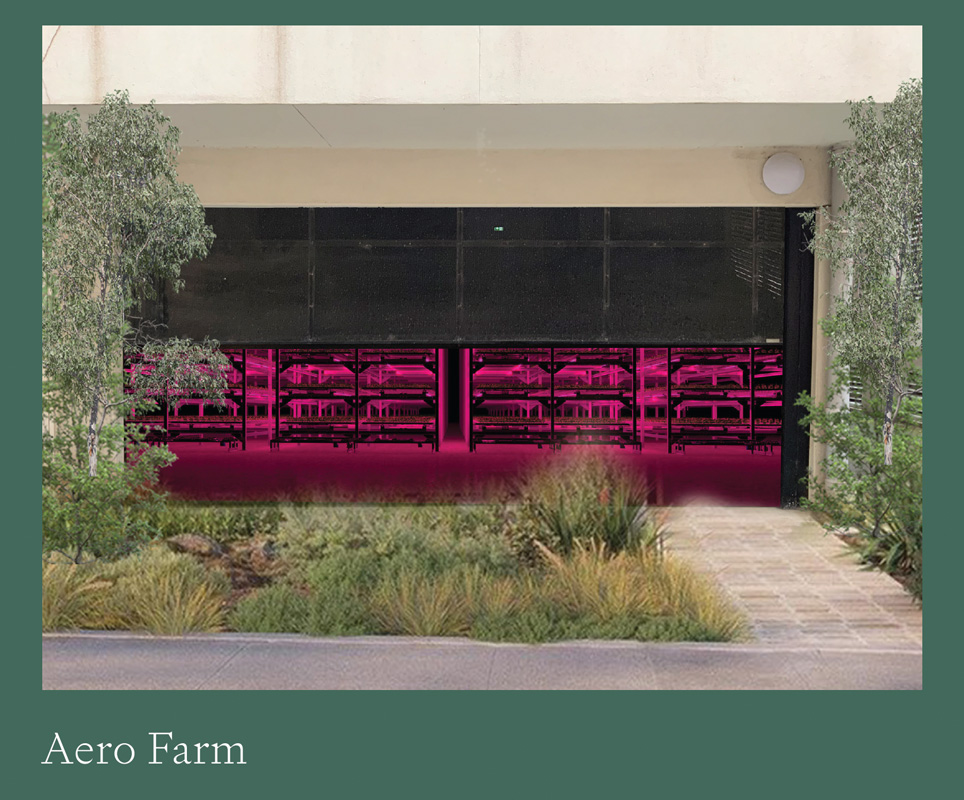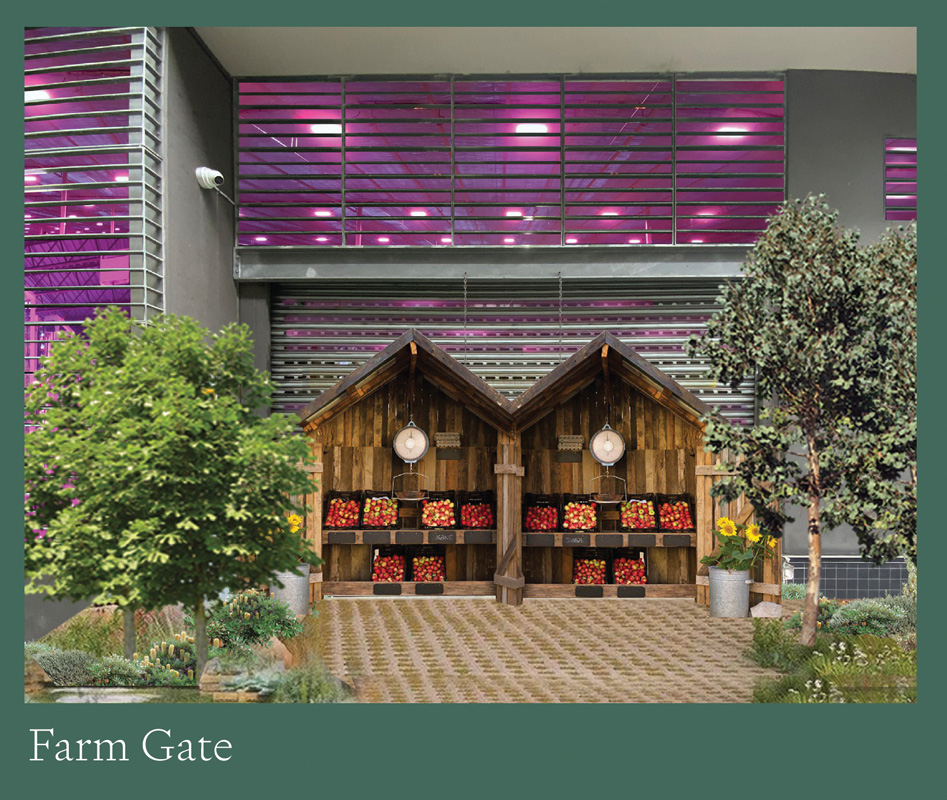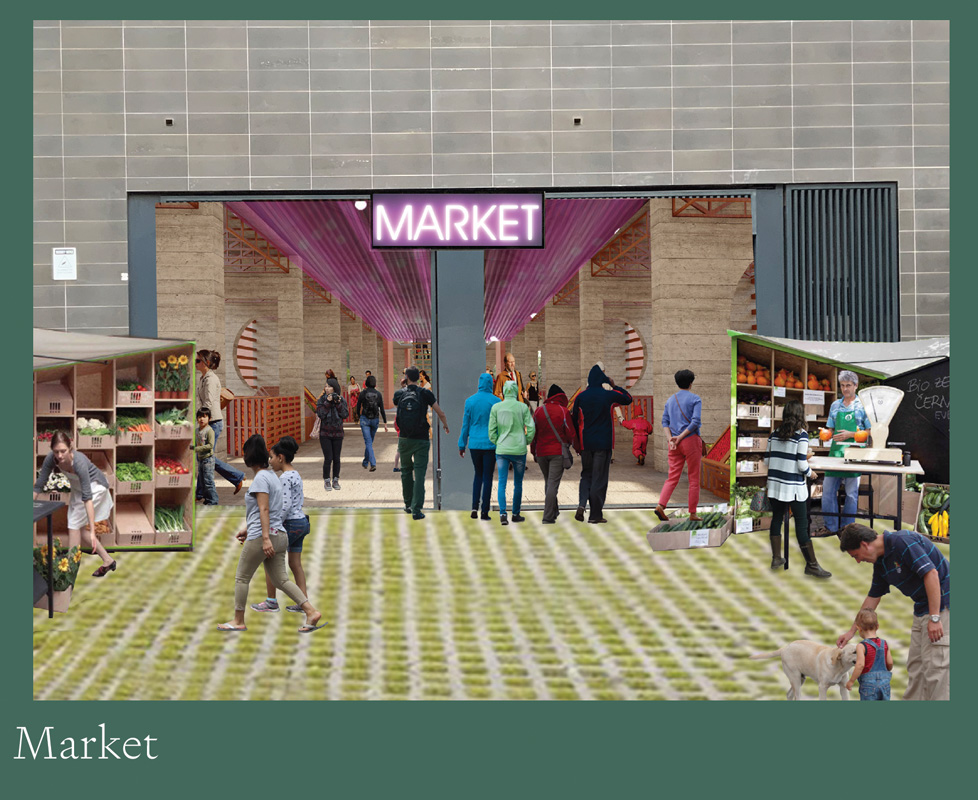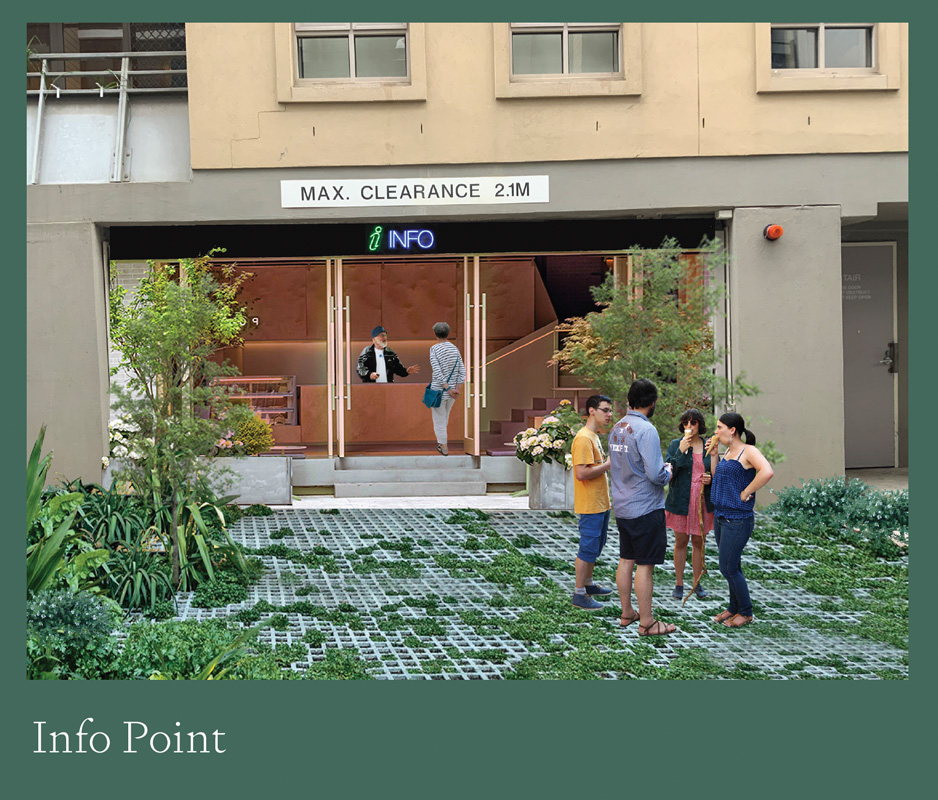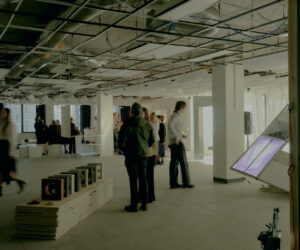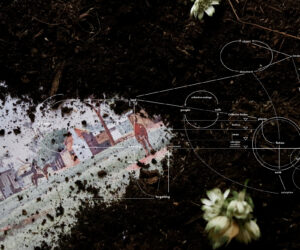INVERT 4.0 MRTN Architects
THE BRIEF
As renewables become the dominant energy source and electric vehicles the norm, how will our cities adapt?
green magazine and MINI invited architects and RMIT master of architecture students to hypothetically redesign an inner urban precinct to demonstrate how architecture, renewable energy and electric cars could work together to produce smarter outcomes for residents and visitors. We asked: how can the well-being of the community be enhanced?
MRTN ARCHITECTS
ROLLER DOOR NO MORE
GOOD BYE CAR OWNERSHIP
In a 2016 article published by the World Economic Forum they report that number of vehicles on the road reduced by up to 90%. With the introduction of self-drive vehicles and alternative models car companies won’t be selling to individuals rather they will be deploying cars into areas to generate ownership cash flow through shared ownership supplying to rental models. Eventually cars will in essence ‘own’ themselves as an autonomous entity in a P2P marketplace.
Goodbye Car Ownership, Hello Clean Air.
World Economic Forum
Published December 2016
BUCOLIC BASEMENTS
Basement carparks are the new fields of plenty. What does this mean for our existing buildings, specifically for the extensive areas dedicated to parking a car? For many years we have insisted on that all building have area set aside for the parking private vehicles. Not only where we live but also where we work. Literally hectares of area for the singular need of a place to put someone’s car.
FARM LOCAL
With a significantly reduced demand for private vehicle car parking, basements can be adaptively upscaled for growing crops for the city that surrounds them. Through the installation of aeroponic farming systems, these basements can be used to grow plants without soil, sunlight or large amounts of water.
‘The Vertical Farm’ by Ian Frazier
New Yorker
Published January 1, 2017
Aerofarm, U.S.A.
Stacked Farm, Australia
